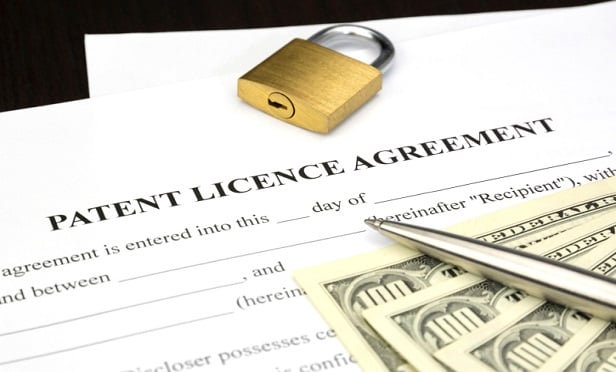Features

Patenting Diagnostic Tests: Can We Expect Changes?
This article discusses the jurisprudence applied to determining patent eligibility of claims for diagnostic methods, and the expectation for changes in analysis of patent eligibility under §101 in the near future.
Columns & Departments
IP News
Federal Circuit Holds PTAB Judges Unconstitutional, Constructs a Fix—But Not All Judges Agree on What Happens Next
Features

More Chinese Companies Are Joining U.S. Firms to Fight Patent Trolls
Some of China's largest companies have banded together with major brands in the United States and elsewhere to neutralize "patent trolls," an indication that the country's firms are becoming increasingly concerned about patent infringement litigation.
Columns & Departments
IP News
More Than a Recitation of Hooke's Law Needed for Patent Protection A Claim for a Chair Limits the Claim to a Chair
Features

The Madrid System Turns 30: The Pros and Cons of Using the Madrid Protocol in the United States and for U.S. Based Companies
This summer, the Madrid System turned 30 years old, and as two more countries prepare to join the Madrid Protocol we look at how the Madrid System has grown as it enters full adulthood.
Features

Exploring the Nebulous Boundaries of Trade Dress
Now that we are in the digital age, questions have been raised about the trade dress of websites and apps.
Features

Damages for Extraterritorial Infringement of U.S. Patents
A look at the gray area of infringement of U.S. patents in the U.S., but with related consequences or actions outside the U.S.
Features

Rights and Obligations In Patent Licenses
The owner of a commercially successful patent may have competing desires. On one hand, the patent owner wants to protect the patent and secure its maximum benefit; on the other hand, the patent owner wants to avoid enforcement litigation with competitors because it is expensive and puts the patent at risk.
Features

Did Congress Create Unintended Risks to Innovators In the AIA?
Many observers greeted the passage of the AIA into law as a long-overdue overhaul of U.S. patent law that aligned it with patent systems prevailing in the rest of the world. Who knew what mischief just seven of the AIA's more than 25,000 words contained? The U.S. Supreme Court answered earlier this year.
Features

Takeaways from the Recent Qualcomm Decision
The DOJ's intervention, and the judge's ultimate decision, has exposed tensions between the DOJ and FTC, and within the FTC itself, and public scrutiny is far from over as the case heads to the Ninth Circuit on appeal.
Need Help?
- Prefer an IP authenticated environment? Request a transition or call 800-756-8993.
- Need other assistance? email Customer Service or call 1-877-256-2472.
MOST POPULAR STORIES
- The DOJ's New Parameters for Evaluating Corporate Compliance ProgramsThe parameters set forth in the DOJ's memorandum have implications not only for the government's evaluation of compliance programs in the context of criminal charging decisions, but also for how defense counsel structure their conference-room advocacy seeking declinations or lesser sanctions in both criminal and civil investigations.Read More ›
- Law Firm Real Estate Strategy: Attorney Offices Are Out, Conference Rooms Are InLaw firms are navigating a paradigm shift in how they approach office space. With the rise of flexible workplaces, firms are finding that when their attorneys do come into the office, the main goal is to connect and collaborate with peers — and this shift has transformed how law firms address their real estate needs.Read More ›
- Use of Deferred Prosecution Agreements In White Collar InvestigationsThis article discusses the practical and policy reasons for the use of DPAs and NPAs in white-collar criminal investigations, and considers the NDAA's new reporting provision and its relationship with other efforts to enhance transparency in DOJ decision-making.Read More ›
- The DOJ's Corporate Enforcement Policy: One Year LaterThe DOJ's Criminal Division issued three declinations since the issuance of the revised CEP a year ago. Review of these cases gives insight into DOJ's implementation of the new policy in practice.Read More ›
- The Perfect Storm: Why Contract Hiring Will Eclipse Direct Hiring In Privacy and Tech In 2024Part Two of a Two Part Article Part 1 of this article looked at how remote flexibility is driving job seekers, that most privacy programs will use contractors by 2026, the speed of hire, the real cost of DIY staffing and whether posting jobs online really works. Part 2 looks at what's next for CPOs, AI jobs in privacy, where the new jobs will come from, whose salaries are spiking and some guidance for the latter half of 2024.Read More ›
